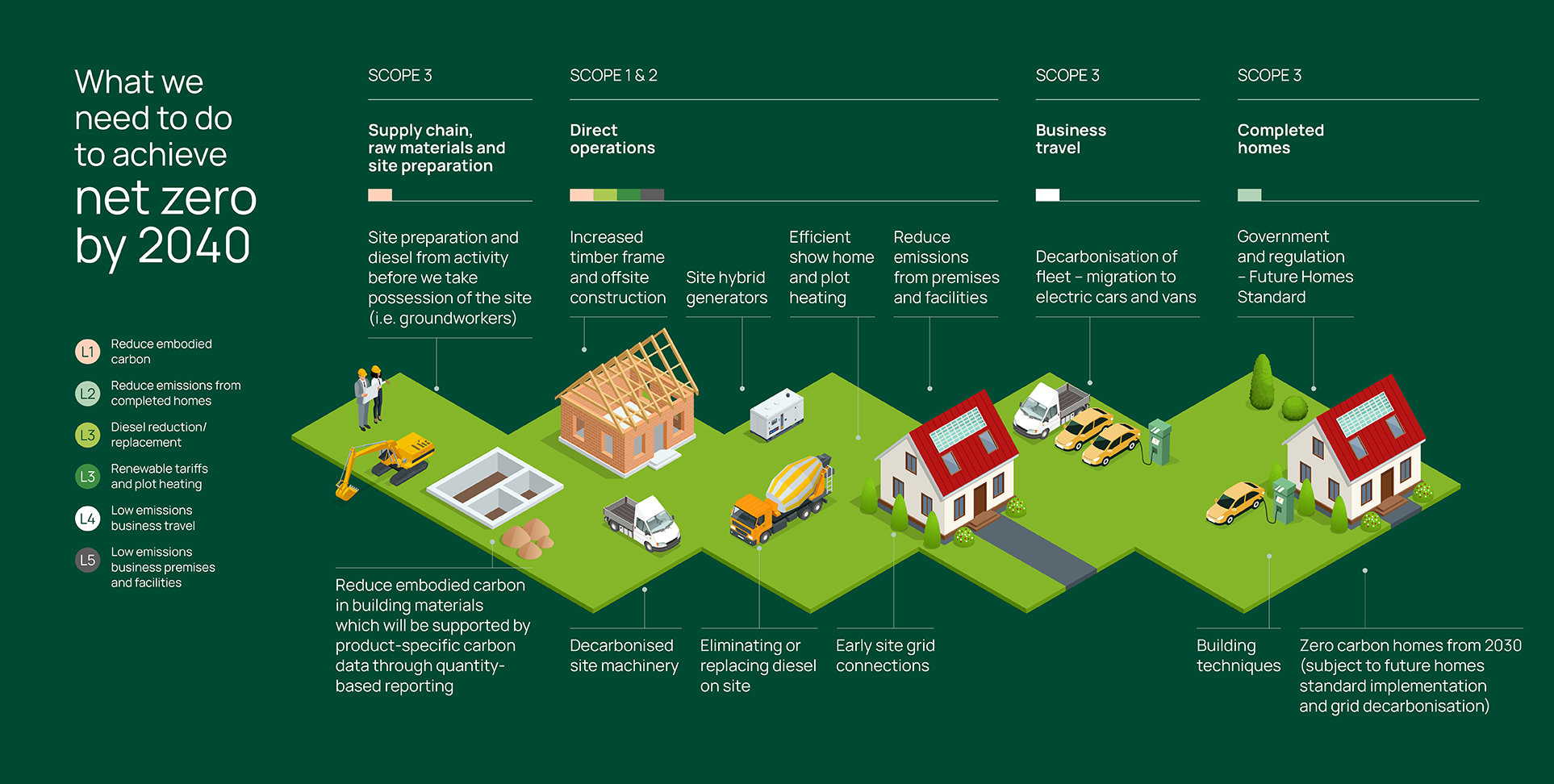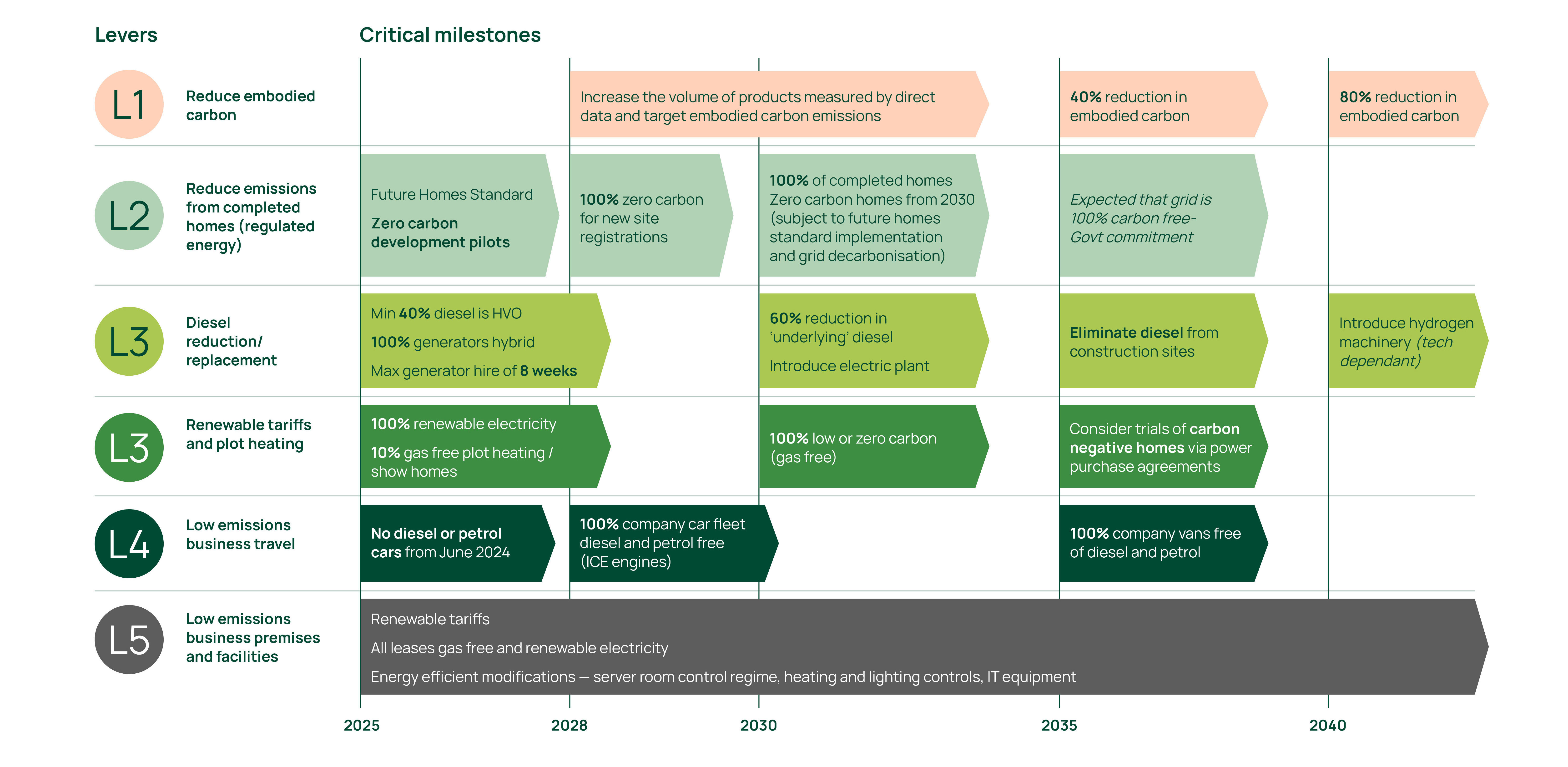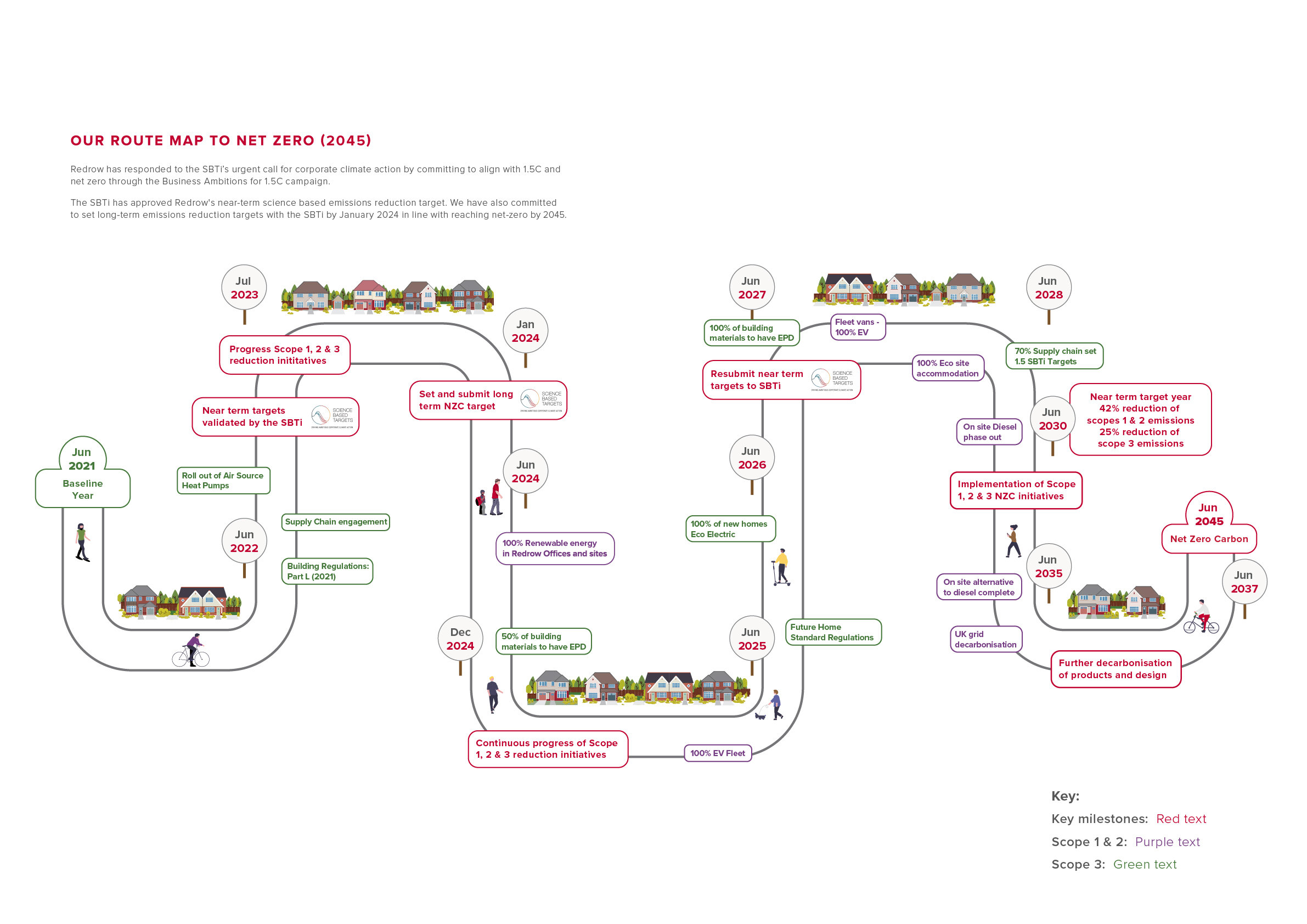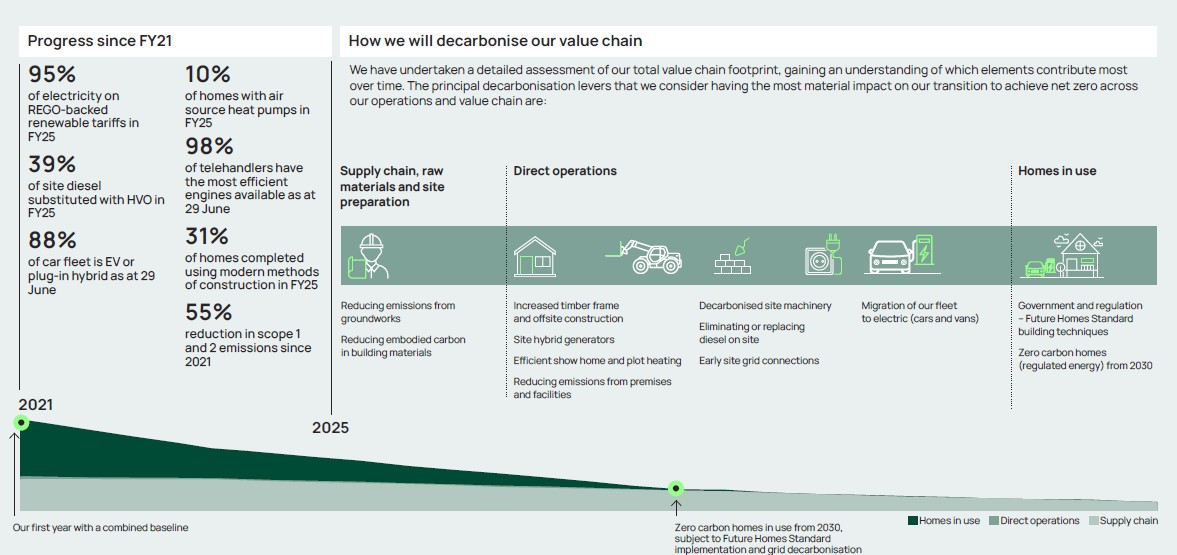What do we need to do to achieve net zero?
Realising our ambitions requires a robust and actionable strategy that spans our operations and value chain. However, progress is also dependent on external enablers such as regulatory clarity, a net zero-ready workforce, resilient supply chains and technological innovation.

We have undertaken a detailed assessment of our total value chain footprint, gaining an understanding of which elements contribute most over time. We have identified five principal decarbonisation levers that we consider having the most material impact on achieving our transition towards net zero operations and supply chain.
Within each of these levers we have identified several actions we can take – some of these are currently underway, while others require further work with value chain partners to understand when and how they can be deployed.
Our decarbonisation levers

L1 – Reduce embodied carbon
Reducing carbon in construction materials -investigating lower-carbon alternatives, engaging suppliers, and improved quantity-based reporting and tracking progress with Environmental Product Declarations.
L2 – Reduce emissions from completed homes
Commitment to deliver zero-carbon ready homes by 2030, designed to be highly energy-efficient, subject to Future Homes Standard implementation and grid decarbonisation.
L3 – Diesel reduction / replacement
Replacing diesel in construction through switching to hydrotreated vegetable oil, trials of hydrogen, electric plant, and innovative low-carbon heating and power solutions.
L4 – Low emissions business travel
Lowering emissions from business travel by switching to electric and renewable-powered vehicles, improving fleet efficiency, for both commercial vehicles and company car fleet.
L5 – Low emissions business premises and facilities
Reducing operational emissions by powering offices with renewable electricity, improving efficiency, and ensuring new facilities are built or retrofitted with lower-carbon solutions.
Redrow had also published a route map setting out their emissions reduction plan and actions over time. Redrow initiatives fall into one of the lever categories that Barratt had identified, creating a strong foundation for our combined strategy.

Reporting on progress as a combined Group
As a combined Group, we are already making strong progress on meeting our net zero ambitions. With previous science-based targets validated and a unified plan underway, we are building real momentum across the value chain towards net zero.

